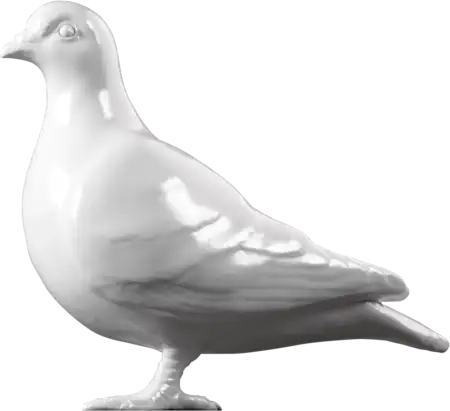Post-Medieval — Late 17th century
Puritan spoon
Latten is a binary alloy of copper (70-80%) and zinc (20-30%). So the composition is identical to brass and the terms brass and latten are used interchangeably in early texts. In the 17th century the alloy often included a third element of iron (1-2%) usually an impurity, which results in a rather brittle metal. The proportion of iron seems to increase during the course of the 17th century. Latten spoons were not made in large numbers in England after the end of the 17th century. Latten spoonmakers are an ellusive group, but their marks generally include one or more spoons (a device seldom found on pewter spoons). Late 17th century examples usually bear the legend in English "Double Whited" that is, doubly tinned. Latten spoons were generally tinned to prevent the taint which unprotected brass is apt to give to food. Tinning was simply carried out by dipping the spoon into a bath of molten tin or pewter; the knops often left untouched to give the impression of a silver spoon with a gilt knop.
- Category:
- Post-Medieval
- Object ID:
- A3311
- Object name:
- Puritan spoon
- Object type:
- Artist/Maker:
- I.R.
- Related people:
- Related events:
- Related places:
- Production date:
- late 17th century
- Material:
latten, copper alloy, tin
- Measurements/duration:
- L 165 mm, W (max) bowl 42 mm, WT 39.3, L 166 mm (overall), L 103 mm (stem), W 42 mm (bowl) (overall)
- Part of:
- —
- On display:
- —
- Record quality:
- 40%
- Part of this object:
- —
- Owner Status & Credit:
Permanent collection
- Copyright holder:
digital image © London Museum
- Image credit:
- —
- Creative commons usage:
- CC BY-NC 4.0
- License this image:
To license this image for commercial use, please contact the London Museum Picture Library.
Download image file
You are welcome to download and use this image for free under Creative Commons Licence CC BY-NC 4.0.
Credit: London Museum
To licence this image for commercial use please contact the London Museum Picture Library

Download image file
You are welcome to download and use this image for free under Creative Commons Licence CC BY-NC 4.0.
Credit: London Museum
To licence this image for commercial use please contact the London Museum Picture Library

